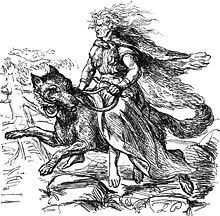User:Lukeav/sandbox
 | This is a user sandbox of Lukeav. You can use it for testing or practicing edits. This is not the sandbox where you should draft your assigned article for a dashboard.wikiedu.org course. To find the right sandbox for your assignment, visit your Dashboard course page and follow the Sandbox Draft link for your assigned article in the My Articles section. |
"Roman Empire Evaluation" This article is protected so that only a few people can edit it. This makes sure that only established reliable sources can edit it. I read under some of the history that some things were actually taken out because someone could not give proper sources. The page is neutral. From what I read of the article there is no one-sided writing about any historical figures they link to in the page. Without going into great detail about the sources, they all seem sot be in order and have a good reputation. Headings and subheadings are correctly placed and can be gone through by any amateur to Wikipedia. It is far more detailed than some articles specific to one person or thing. It gives a nice timeline for the Roman Empire, giving things like which emperor was in power at certain times. As far as I can tell it sites things quite well, it gives many links to other pages to read up on other articles.
Added to Polis article. "These cities consisted of a fortified city centre built on an acropolis or harbor and controlled surrounding territories of land (chlora)." Cartwright, Mark. "Polis." Ancient History Encyclopedia. Ancient History Encyclopedia, 06 Jun 2013. Web. 07 Oct 2017.
Article Jotunn
Jotunn (means "the great eater")
Take out Odin, and put Loki in his place. Could not find evidence to point that Odin was a direct descendant of the Jötunn.
Henry Cooper - I found evidence that Odin is a descendant of Yimir here - http://www.vrilology.org/in_the_beginning.htm
"From Ymir were born two races of giants... The male was named Bolthorn and his daughter was Bestla."
"Buri produced a son, Borr, who took Bestla as a mate"
" From the joining of Borr (Born), who represented order and Bestla, representing the beneficent forces of nature, was born three sons, Odin, Vili and Ve."
the above may be partially wrong and it may be best for the moment to just completely leave it out.
Add to Thurses - some writers claimed that this word had the same meaning as thirst, while some think they owed this name to the high towers("turseis") which they were supposed to have built.
Background[edit]

To the Norse, the gods were seen as being the powers that held the cosmos in order. The Northern races imagined as beings who were opponents and rivals of the gods. They sought to bring the cosmos back into the uninterrupted reign of darkness and chaos. Because of this the homelands of Jötunn were often depicted as remote, barren and desolate. Their homes consisted of locations such as the bottom of the ocean or in impenetrable forests. Just as the gods were the personifications of all that is good and lovely, the Jötunn were seen as all that was ugly and evil.
They were all no doubt feared, but they were necessary to the cosmos just as the Gods were. Such an example would be when Odin and his brothers slew Ymir; and from his skull they fashioned the sky, from his flesh the earth, from his bones the mountains, and from his blood the sea.
The Jötunn had their roles to play within Ragnarok just as the gods did. In fact, the gods and Jötunn were often seen interacting and co-existing with each other. They often inter-married and had children together giving birth to many of the Norse pantheon.
References[edit]
The Viking Spirit: An Introduction to Norse Mythology and Religion by Daniel McCoy
Myths of the Northern Lands by H. A. Geurber
Ymir. Columbia Electronic Encyclopedia, 6th Edition, Q1 2017
